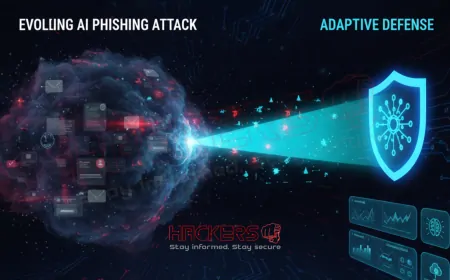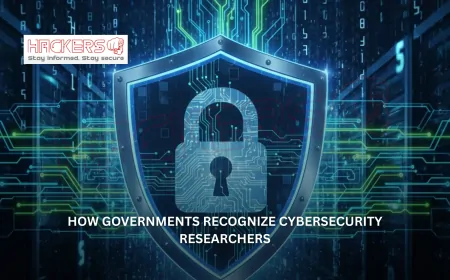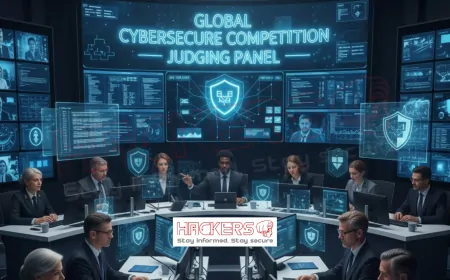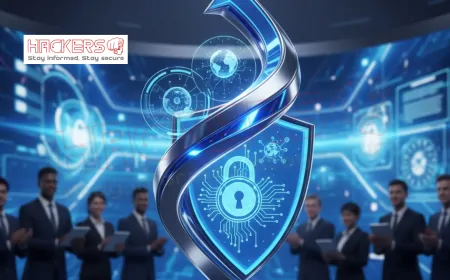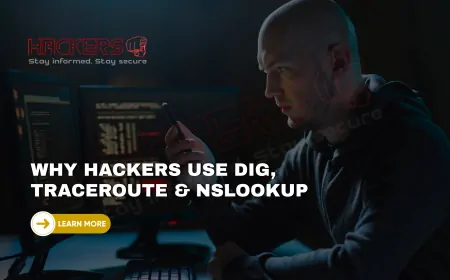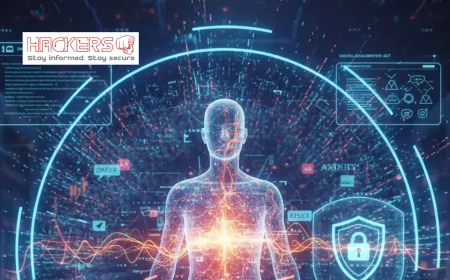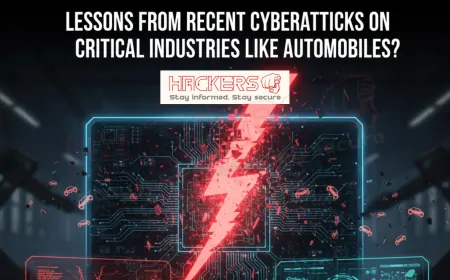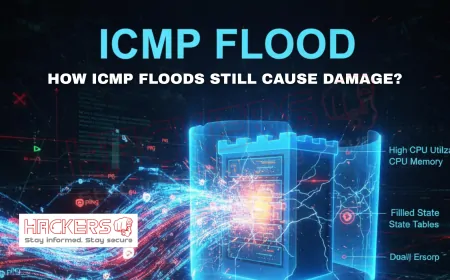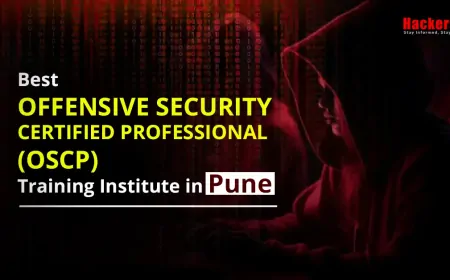What Makes a Cybersecurity Product Deserving of an Innovation Award?
Every year, cybersecurity conferences and industry publications roll out awards for the most innovative products in the field. These honors are not just shiny trophies on a shelf. They signal trust, attract investors, and guide buyers toward tools that truly stand out in a crowded market. But what separates a winning product from the rest? Is it flashy marketing, cutting-edge technology, or something deeper? In this blog, we dive into the core qualities that make a cybersecurity solution worthy of innovation recognition. Whether you are a developer, a security leader, or a curious beginner, understanding these criteria can help you spot true breakthroughs in a sea of claims.

Table of Contents
- The Role of Innovation Awards in Cybersecurity
- Core Criteria for Award-Worthy Products
- Real-World Examples of Award-Winning Tools
- How Judges Evaluate Submissions
- The Impact of Awards on Business and Adoption
- Common Pitfalls That Disqualify Products
- Emerging Trends Shaping Future Winners
- Conclusion
- Frequently Asked Questions
The Role of Innovation Awards in Cybersecurity
Innovation awards serve as benchmarks in a fast-moving industry. With thousands of security tools launched each year, buyers struggle to separate hype from value. Awards from trusted sources like SC Media, RSA Conference, or Black Hat cut through the noise. They validate claims with expert scrutiny and peer review.
These honors also drive progress. Companies compete to outdo each other, leading to faster development cycles and bolder ideas. For startups, an award can mean survival: it opens doors to funding, partnerships, and media coverage. For established vendors, it reinforces market leadership.
Core Criteria for Award-Worthy Products
Judges look beyond marketing slogans. They evaluate products on multiple dimensions. Here are the key factors that consistently appear in award rubrics.
- Originality: The product must introduce a new approach, not just improve an existing one. Incremental updates rarely win.
- Effectiveness: It must solve a real, measurable problem. Proof comes from data, case studies, or independent testing.
- Scalability: The solution should work for small teams and global enterprises alike, without breaking under load.
- Usability: Complex tools fail if security teams cannot adopt them quickly. Intuitive design is a must.
- Integration: The product should fit into existing workflows, not demand a complete overhaul.
- Impact: It must deliver clear outcomes: fewer breaches, faster response times, or lower costs.
These criteria balance technical merit with practical value. A brilliant algorithm that only PhDs can use will not win. A simple tool that stops ransomware in real time just might.
Real-World Examples of Award-Winning Tools
Let us look at past winners to see these principles in action. The table below highlights five products that earned top innovation awards in recent years.
| Product Name | Company | Core Innovation | Award Year | Key Outcome |
|---|---|---|---|---|
| Cortex XDR | Palo Alto Networks | Behavioral analytics across endpoints, network, and cloud | 2021 | Reduced mean detection time by 60 percent |
| Orca Security | Orca Security | Agentless cloud security scanning | 2022 | Scans full environments in under 5 minutes |
| Tenable.ep | Tenable | Unified vulnerability and compliance management | 2020 | Prioritized 95 percent of critical risks automatically |
| Deep Instinct | Deep Instinct | Deep learning for zero-day malware prevention | 2023 | Blocked 99.9 percent of unknown threats |
| Snyk | Snyk | Developer-first open-source security | 2022 | Integrated fixes into CI/CD pipelines |
Each winner solved a specific pain point in a novel way. Orca eliminated agents, a long-standing deployment headache. Deep Instinct used AI to stop threats before signatures existed. These examples show that innovation often comes from reimagining old problems.
How Judges Evaluate Submissions
Award panels include analysts, CISOs (Chief Information Security Officers), and academics. They follow structured scoring.
- Technical Demo: Vendors present live or recorded demonstrations. Judges test claims in sandbox environments.
- Customer Evidence: Real deployments with metrics matter more than lab results. Anonymized case studies are common.
- Peer Review: Other entrants and past winners provide feedback. This reduces bias.
- Future Potential: Judges ask: Does this set a new standard? Will it influence the industry in three years?
Transparency matters. Reputable awards publish criteria and panelist names. Some even share scoring rubrics online.
The Impact of Awards on Business and Adoption
Winning changes trajectories. A 2023 survey found that 78 percent of security buyers consider award status in purchasing decisions. Media coverage follows, with winners featured in Forbes, Dark Reading, and TechCrunch.
Startups see the biggest boost. One cloud security firm reported a 300 percent increase in demo requests after winning at RSA. Established players use awards to upsell existing clients into premium tiers.
End users benefit too. Awards highlight tools that reduce complexity. A mid-sized bank adopted an award-winning identity platform and cut login fraud by 85 percent in six months.
Common Pitfalls That Disqualify Products
Not every submission succeeds. Here are frequent mistakes.
- Overhyped Claims: Promising 100 percent protection invites skepticism. Judges prefer honest benchmarks.
- Poor Documentation: If setup takes hours and manuals are unclear, usability scores drop.
- Lack of Differentiation: "We do what others do, but faster" is not innovative.
- Ignoring Privacy: Tools that collect excessive user data face ethical scrutiny.
- No Real Customers: Pre-revenue products rarely win unless backed by strong pilots.
Even strong contenders fail if they submit late or skip required fields. Attention to detail reflects product quality.
Emerging Trends Shaping Future Winners
The bar keeps rising. Tomorrow's winners will likely excel in these areas.
- Zero Trust Automation: Tools that enforce least privilege without manual rules.
- AI-Driven Threat Hunting: Systems that predict attacks using behavioral patterns, not just signatures.
- Privacy-Preserving Analytics: Security insights without exposing personal data.
- Supply Chain Security: Platforms that scan software dependencies in real time.
- Low-Code Security: Solutions that let non-experts build custom defenses.
Integration with generative AI is another frontier. Imagine a tool that writes detection rules from plain English descriptions. Early prototypes already exist.
Conclusion
Innovation awards in cybersecurity are more than ceremonies. They spotlight products that solve urgent problems in fresh, effective ways. Winners earn recognition through originality, proven results, and seamless adoption. They set standards that push the entire industry forward. For vendors, the path to an award demands rigorous testing, honest marketing, and customer focus. For buyers, these honors offer a shortcut to tools that deliver real protection. As threats evolve, so will the criteria. But the core question remains: Does this product make the digital world safer in a way no one else has? Answer yes with evidence, and the trophy might follow.
What is a cybersecurity innovation award?
It is a recognition given to products or solutions that introduce new, effective ways to protect systems, data, or users from threats.
Who gives out these awards?
Industry publications, conferences like RSA and Black Hat, analyst firms, and associations like SC Media and ISSA.
Do awards guarantee a product is the best?
No, but they indicate strong performance, expert validation, and real-world impact at the time of judging.
Can startups win innovation awards?
Yes, many do. Judges value fresh ideas over company size, especially with solid customer proof.
Is marketing important for winning?
Clear communication helps, but technical merit and evidence matter more. Hype without substance loses.
How long does the judging process take?
Typically 4 to 12 weeks, including submissions, demos, reviews, and final voting.
Are open-source tools eligible?
Yes, if they meet criteria for originality, impact, and active maintenance. Some awards have separate categories.
What role does usability play?
A major one. Tools must be adoptable by typical security teams, not just experts.
Do awards consider cost?
Indirectly. Value for money strengthens a case, but innovation is the primary focus.
Can a product win multiple years?
Rarely for the same version. New features or major upgrades can qualify again.
How do awards affect pricing?
Winners sometimes raise prices due to demand, but competition often keeps increases modest.
Are there regional innovation awards?
Yes, events in Europe, Asia, and the Middle East honor local and global solutions.
What is the biggest mistake entrants make?
Submitting without customer evidence or failing to show what makes their product truly different.
Do judges test products themselves?
Often yes, using test environments, sample data, or vendor-guided demos.
Can free tools win awards?
Yes, if they deliver exceptional innovation and adoption, even without a paid model.
How has AI changed award criteria?
It raised the bar. AI must be used meaningfully, not just as a buzzword, with measurable outcomes.
Are privacy features evaluated?
Increasingly yes. Tools that minimize data collection while staying effective score higher.
What is the benefit for end users?
Awards highlight reliable, forward-thinking tools that reduce risk and simplify security.
Can older products win?
Only if they introduce groundbreaking updates that redefine their category.
How can I prepare a strong submission?
Focus on data, customer quotes, live demos, and a clear explanation of your unique value.
What's Your Reaction?













